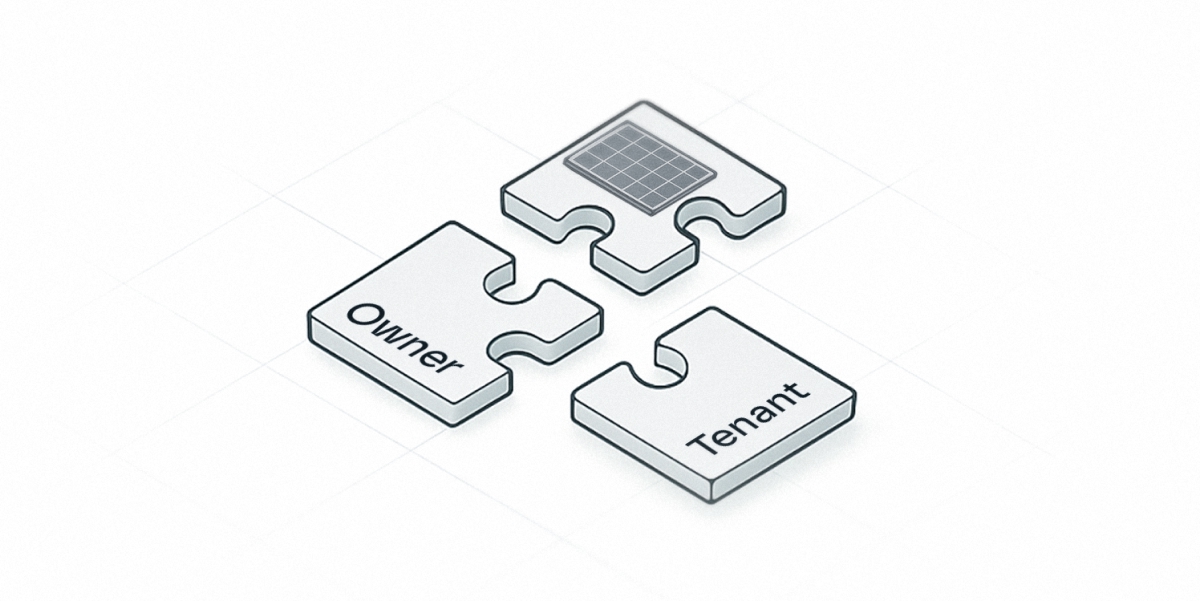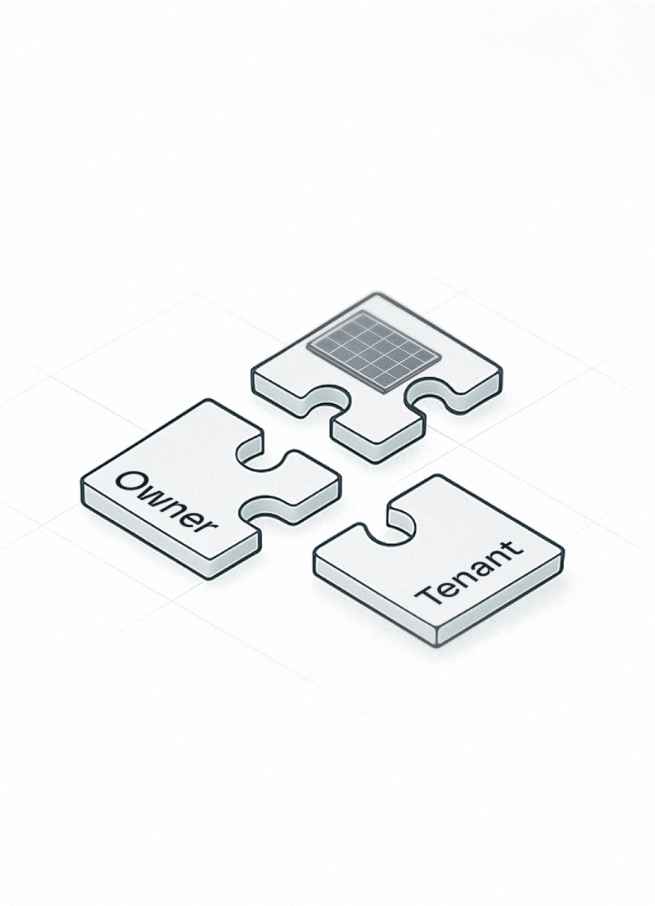Solving the Split Incentive: How Ivy is Unlocking Clean Energy for Rental Properties

The Clean Energy Bottleneck in Rentals
In the race to decarbonize the built environment, one major sector has consistently lagged behind: rental housing. While single-family homes and commercial buildings have seen widespread solar adoption, multi-tenant properties remain largely untouched. The reason isn’t technological—it’s financial.
This barrier is known as the “split incentive” problem. Building owners must invest in clean energy upgrades, but the savings flow to the tenants who pay the utility bills. That means owners see no direct return on their investment, and tenants remain disconnected from the energy transition. It’s a lose-lose dynamic that has left millions of rooftops sitting empty and untapped.
As Ivy Energy CEO Dover Janis explains on the recent SunCast Podcast with Nico Johnson, “Solar doesn’t fail on apartments because of physics—it fails because of accounting.” The panels, incentives, tariffs, and demand all exist. What’s been missing is a financial model and digital products that make the hardware and utility tariffs make sense for both property owners and tenants.
Why the Old Model Didn’t Work
In the legacy model of multifamily energy management, solar systems were either installed behind a common meter—benefiting only the property’s common areas—or required complex enrollment into utility-managed programs. In both scenarios, the result was the same: the owner couldn’t capture or allocate value efficiently, and tenants often saw no direct savings from onsite energy.
Owners who wanted to provide solar benefits to renters were tasked with figuring out how to manage an accounting maze of spreadsheets, manual reconciliation, and inconsistent billing processes. For CFOs and asset managers, it wasn’t a question of wanting solar—it was a question of making the math work.
As Janis put it, “CFOs aren’t in the business of charity. They’re not going to spend $5 million just so tenants can save money. They need to see a return.” Until recently, that financial feedback loop didn’t exist.
The New Model: Behind-the-Meter, Beyond the Utility
Ivy Energy’s Virtual Grid platform was designed to rewrite that playbook. By combining behind-the-meter energy tracking with virtual net metering and automated billing, Ivy gives property owners the “easy button” for multifamily solar.
Through Ivy’s patented software platform, owners can:
- Install solar and track generation in granular time intervals
- Virtually allocate energy production to each unit, matching virtual metering tariffs or remodelling multi-meter electron distribution accounting
- Offer tenants fixed, discounted clean energy plans
- Recover the investment through automated energy billing that meets any tariff or regulatory framework in all 50 states
Instead of depending on a utility to manage credits or reimbursements, Ivy’s platform operates independently—creating a new financial reconciliation layer between owners and tenants. This turns solar from a fixed cost into a recurring revenue asset and transforms the split incentive into a shared incentive.
The result? A sustainable win-win:
- Owners boost property value and NOI.
- Tenants get transparent, lower-cost energy.
- Communities advance decarbonization at scale.
The Policy Backbone: Virtual Net Metering (VNEM)
To make this model scalable, Ivy has been at the forefront of Virtual Net Energy Metering (VNEM) advocacy. In the whitepaper “Model Virtual Net Metering for Multi-Unit Buildings”, Ivy’s policy and engineering team—led by Davis Giles, Scott Bechler, and Alana Steele—lays out the technical and regulatory foundation for this shift.
The paper explains that individual metering requirements under federal PURPA legislation have long limited solar integration in multi-tenant properties. Each tenant’s meter was controlled by the utility, creating high costs and regulatory friction. VNEM breaks that bottleneck by allowing energy to be virtually assigned across multiple units under a single onsite generation system.
Through active engagement in these markets, Ivy has helped shape VNEM programs that align with real-world property operations—driving toward a more equitable and efficient energy ecosystem. Ivy’s Virtual Grid is the backbone of a growing ecosystem that includes IvyDual—designed for California’s VNEM 3.0 policy—and Ivy SunRate a flexible DER billing solution that adapts to market-specific rules nationwide. Together, they form a unified framework for distributed energy billing across the U.S.
Equity, Access, and Scale
Beyond the economics, Ivy’s work is grounded in energy equity. Renters, nearly 36% of the U.S. population—have historically been left out of the clean energy movement. Ivy’s platform ensures that solar savings and environmental benefits are shared fairly among all residents, not just homeowners.
A Financial Framework for Decarbonization
The future of multifamily solar isn’t about kilowatts—it’s about cash flow. By reframing solar adoption as a financial reconciliation problem instead of a physical technical one, Ivy Energy has created the missing digital infrastructure to unlock an entire asset class.
As Dover Janis said on SunCast:
“When owners can invest, get paid back through billing, and make tenants happy in the process, sustainability finally scales.”
If we’re serious about decarbonization, rental housing cannot remain an afterthought. The technology is here. The demand is clear. And thanks to innovations like Ivy’s Virtual Grid and model VNEM framework, the economics finally make sense.
The Economic Flywheel of Multifamily Solar
When energy billing and investment are connected, solar becomes more than an expense, it becomes an income stream.
Ivy’s platform turns kilowatt-hours into cash flow, allowing every dollar invested in solar to circulate back through the property’s financial ecosystem.
This model creates a self-reinforcing loop:
- Solar reduces operating costs
- Billing recovers investment
- Savings build resident loyalty
- Tenant stability increases asset value
That’s not just clean energy—that’s a sustainable business model. The era of multifamily solar has arrived—and this time, it adds up.
Request a free portfolio review with our energy experts and uncover how Ivy Energy’s Virtual Grid can transform your properties into profitable, sustainable assets.




